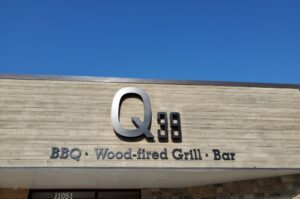Kansas City: A Flourishing Hub for Employee-Owned Companies
Nestled in the heart of the Midwest, Kansas City has blossomed into a vibrant center for employee-owned companies, with a special emphasis on sectors like architecture, engineering, and construction. It might not come as a surprise that among the area’s top engineering firms, five out of six operate under employee stock ownership plans, or ESOPs. This distinctive model has gained traction due to its ability to create an ownership culture, align interests, and pave the way for lasting success.
A Recent Discussion Among Local Leaders
Recently, local leaders from various ESOP companies got together to share insights and experiences regarding the pros and cons of this ownership structure. This engaging conversation, led by the Kansas City Business Journal’s publisher Stacie Prosser, touched on everything from the ideal characteristics of companies suited for ESOPs to the challenges that come with them.
How ESOPs Function in Real Life
To kick things off, Dana Kettle from Henderson Companies shared how the ESOP model fits into their company culture. “To us, it means living our vision and purpose, focusing on teamwork,” she explained. Over the years, they gradually transitioned from having 60 equity shareholders to 1,000 employee owners, making ESOP the DNA of their workplace.
Amy Allen from Emery Sapp added further insights by highlighting that when employees become owners, it naturally fosters a sense of accountability. “With an ESOP, the employees share in both profits and losses, creating an ownership mindset,” she said.
Strengthening Company Culture
Tom Roberts from Garney Construction emphasized that the ESOP acts as a retirement plan, but it is so much more. “Switching to an ESOP was a way to continue investing in our employees and cultivate an ownership culture,” he shared. This sentiment was echoed by Alissa Schuessler of Burns & McDonnell, who noted that employee ownership sets their organization apart. “Every employee-owner has a stake in the game,” she stated proudly.
Understanding Participation Requirements
As the discussion moved towards who gets to participate, Schuessler explained, “At Burns & McDonnell, all employees are required to be part of the ESOP, but that can vary based on each plan’s structure.” This flexibility means that not every employee in an ESOP necessarily has to be involved, as highlighted by Allen with her comments on partial ESOPs.
Evolving ESOPs: Years of Transformation
As the conversation unfolded, a key point surfaced: the evolution of an ESOP over time. For Emery Sapp, Allen mentioned that in the first decade, the priority was on generating profits to pay off the founder’s debt. “Now that we’ve matured as an ESOP, managing it has become more complex, especially with such a significant number of employee owners on board,” she added.
Others noticed a similar trajectory. Roberts highlighted that it took years for Garney to transition to a fully employee-owned structure, saying, “We became 100% employee-owned in 1995 after fulfilling some ownership requirements.”
Considerations for Future Owners
When discussing considerations for traditional company owners contemplating an ESOP as an exit strategy, Dianne Smith of Bank of America noted legacy concerns. Owners may not be ready to completely step back from their business. “An ESOP can allow the selling shareholder to remain involved, which is often a huge consideration,” she advised.
Schuessler pointed out that a solid management team is essential to keep things running smoothly post-transition. “Tenure at the company encourages stability, and that makes a difference,” she remarked.
Engaging with the Community
Additionally, the importance of staying connected with the ESOP community was a recurring theme throughout the discussion. Sharing knowledge and experiences helps companies grow. “Kansas City is a treasure trove of local advisors who can guide you through the ESOP journey,” said Roberts.
Challenges Ahead
No conversation about ESOPs would be complete without mentioning the hurdles they face. Ensuring ongoing profitability and cash flow to meet repurchase obligations is a recurring challenge that weighs heavily on the minds of these leaders. “We must maintain a sustainable plan that keeps cash flow healthy,” Roberts stressed.
Schuessler noted that while achieving success in an ESOP is rewarding, it comes with a need for dedicated guidance and management to avoid potential downfalls. “A hot market can lead to overextending yourself; strong management is crucial, regardless of whether you’re an ESOP or not,” she said.
The Bright Side of ESOPs
The discussion wrapped up on a positive note, with the leaders acknowledging the benefits ESOPs bring to both employees and the wider community. Allen expressed her excitement, saying, “It’s incredible to see employees embrace their new ownership role and start fostering a collaborative, spirited atmosphere.”
It’s clear that Kansas City is not only a fantastic place for businesses but also a nurturing ground for employee ownership models that empower individuals and strengthen communities. As Kansas City continues to develop as an ESOP hub, it becomes evident that the partnership between employees and companies will enhance productivity and workplace satisfaction in the years to come.







